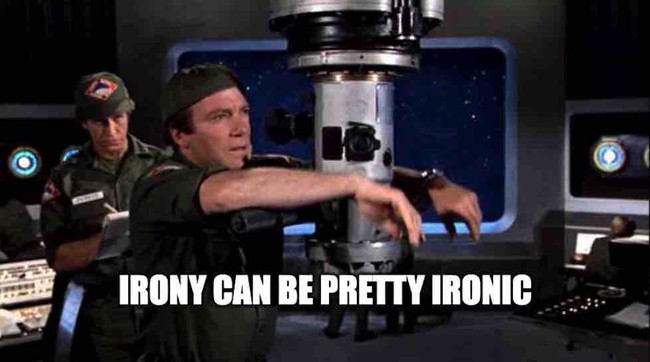
www.newsbusters.org
FLASHBACK: Liberal Reporters Are Always Democrats’ Biggest Fans
The Democratic Convention begins tomorrow in Chicago, and there should be absolutely no suspense over how the media will treat Kamala Harris, Tim Walz and the party’s other stars. The MRC’s archives, going back to 1988, show that Democrats always — always — get a huge tailwind of good press coming out of their party conventions.
Even the most leftwing candidates — like the Rev. Jesse Jackson in 1988 — are classified as “mainstream,” while liberals like Clinton and Gore in 1992 are dubbed “a conservative pair.” The speeches are universally applauded as amazing feats of inspiration. After his 2016 convention speech, Barack Obama was celebrated as “our national poet,” while journalists fluttered over John Edwards “charisma” in 2004.
“Having watched Joe Biden since the ’70s when he first ran for Senate, I’ve never seen him deliver a better speech,” MSNBC’s Andrea Mitchell enthused four years ago.
There’s a reason why Democrats get a softer ride from journalists. Back in 2004, New York Times reporter John Tierney surveyed journalists at a press party at that year’s Democratic convention: “When asked who would be a better President, the journalists from outside the Beltway picked Mr. Kerry 3-to-1 [over Republican President George W. Bush], and the ones from Washington favored him 12-to-1,” Tierney disclosed in his August 1, 2004 “Political Points” compendium.
Eight years later (September 5, 2012), the Huffington Post quoted CNN’s Washington bureau chief Sam Feist pointing out the obvious: “If you watch MSNBC during convention coverage, you have a cheering section for the Democrats.”
True, but a journey through the Media Research Center’s archives shows that the list of media cheerleaders extends far beyond MSNBC. Here are some of the choicest quotes collected by MRC analysts and the team at NewsBusters over the years:
■ “Jesse Jackson succeeded in conducting a brilliant presidential campaign....and conducted a mainstream campaign.”— Former CBS Evening News anchor Walter Cronkite during live coverage, July 20, 1988.
■ “He [Jackson] has become here, a kind of new, he’s acquired a new status. He’s almost like Hubert Humphrey was, a sort of conscience of the country.”— Retired correspondent Eric Sevareid during CBS News convention coverage, July 20, 1988.
■ “Even liberal Democrats now...think that Al Gore and Bill Clinton could be a winning ticket. They’re willing to swallow the problems that they have with such a conservative pair in hopes of winning.”— CBS reporter Susan Spencer, July 13, 1992 convention coverage.
■ “That’s the ticket. Not a liberal in sight, and that’s the picture Clinton wants the convention to leave with the country, Democrats happily moving from their liberal past to their centrist future.”— ABC reporter Jim Wooten on the July 13, 1992 World News Tonight, talking about the first night of the Democratic convention.
■ “But with these guys coming [Jesse Jackson and Mario Cuomo], it was kind of like your young love coming back and, ‘oh, I remember when I was, you know, young and in love with this guy who was totally unacceptable, and I did the right thing by marrying the right guy — but, gee, he was kinda cute.’”— ABC’s Cokie Roberts discussing the Democrats’ Tuesday night convention speeches, August 28, 1996 Good Morning America.
■ “Once a generation, conventions create a political star — Mario Cuomo in 1984 with his ‘shining city on a hill speech.’ I think Joe Lieberman might have done that tonight. As one delegate said to me, ‘He really tapped into a spirit in the hall, by tapping into that rich immigrant experience.’”— ABC’s George Stephanopoulos during live convention coverage, August 16, 2000.
■ “Let’s talk about what they are now calling, Mr. Vice President, ‘The Kiss’. You heard about ‘The Catch’ in that football game, this is ‘The Kiss.’ You really planted one on Mrs. Gore at the beginning of your speech there. What were you thinking?...Well after watching that kiss I know how you survived 30 years, Mr. Vice President. Way to go! It’s nice talking to you.”— Today co-host Matt Lauer to Al Gore, August 21, 2000, the Monday following his convention speech.
■ “The personality that Edwards exudes when he comes to these events is something that’s pretty infectious with these delegates. And I talked to one delegate yesterday who says, ‘You know, I’m coming to like John Kerry, but I haven’t yet fallen in love with him. But I will tell you this, I have fallen in love with John Edwards.’ It’s obvious the charisma out there gets to everybody here in the Fleet Center.”— CBS’s John Roberts during live coverage shortly after vice presidential nominee John Edwards finished his convention speech, July 28, 2004.
■ “People who served with him in Vietnam said, ‘You can’t believe what he’s like in battle. He just changes. He gets this look over him.’ And when I saw him walking down the aisle tonight on the way into the speech, I said, ‘Oh yeah, there’s that look.’ And I just knew at that point that he’s going to nail this, and he did. I have never seen the man speak so well.”— Time’s Joe Klein reviewing John Kerry’s convention speech, CNN’s NewsNight, July 29, 2004.
■ “I’m just not so sure I’ve ever witnessed anything like this in all of the politics that I’ve covered, which goes back quite a few years already. This place rumbled. And there were certain points during the speech when the stadium was just so alive, and the ground was almost quaking.”— CBS’s Harry Smith on The Early Show, August 29, 2008, the morning after Barack Obama’s convention address.
■ “In many ways it was less a speech than a symphony. It moved quickly, it had high tempo, at times inspiring, then it became more intimate, slower, all along sort of interweaving a main theme about America’s promise, echoes of Lincoln, of King, even of Reagan and of Kennedy....It was a masterpiece.”— CNN analyst David Gergen during live coverage following Obama’s convention speech, August 28, 2008.
■ “[Obama] had to do two things. He had to be tough and he had to be detailed. We know he is eloquent. He can’t write an ineloquent check, this man.”— Newsweek editor Jon Meacham on PBS’s Charlie Rose following Obama’s speech, August 28, 2008.
■ Keith Olbermann: “For 42 minutes, not a sour note and spellbinding throughout in a way usually reserved for the creations of fiction. An extraordinary political statement. Almost a fully realized, tough, crisp, insistent speech in tone and in the sense of cutting through the clutter....I’d love to find something to criticize about it. You got anything?”Chris Matthews: “No. You know I’ve been criticized for saying he inspires me, and to hell with my critics!...You know in the Bible they talk about Jesus serving the good wine last, I think the Democrats did the same.”— MSNBC live convention coverage, August 28, 2008.
■ “I wanted to take you back to something you wrote. You wrote that ‘I have never had a President who inspired me the way people tell me my father inspired them. But for the first time, I believe, I have found the man who could be that President.’ Do you still feel just as inspired by President Obama?”— ABC’s David Muir to Caroline Kennedy on World News, September 5, 2012.
■ “Bill Clinton simply owned the room here, stayed longer than he was supposed to, but nobody seemed to mind....It was an appearance that was the height of political stagecraft.”— NBC’s David Gregory on Today, September 6, 2012.
■ Co-anchor Scott Pelley: “Night Two of the convention, the floor is covered with shards of glass. Hillary Clinton has shattered another ceiling for women.”...Co-anchor Gayle King: “Happy tears in the room for Hillary Clinton and I mean a lot of tears. One man, a delegate from South Carolina, told me that he went into the ugly cry which means sobbing uncontrollably.”— During CBS’s live Democratic convention coverage, July 26, 2016.
■ “[Barack Obama] invoked the audacity of hope, all of the spirit, all of the creativity of his own brilliant speech writing....I don’t think we’ve ever had a President, save Lincoln, who is as great a speechwriter as this man.”— Correspondent Andrea Mitchell following Barack Obama’s speech as aired on MSNBC’s live Democratic convention coverage, July 27, 2016.
■ “It’s hard, frankly, to stop quoting from his [Barack Obama’s] remarks because they amounted to one of the most moving, inspiring valentines to this country that I’ve ever heard, brimming with regard for it and gratitude to it. We’re going to miss this man, America. Whatever his flaws, he’s been more than our president. Time and again, he’s been our national poet.”— New York Times columnist Frank Bruni in July 28, 2016 piece, “Freedom from Fear.”
■ “For women who have long fought for a woman in the White House, the sight of Clinton walking out on to the stage dressed like a white knight will be something they’ll tell their daughters about.”— Host Carol Costello on CNN Newsroom, July 29, 2016.
■ “I have to say that watching Barack Obama, this was not a convention speech, this was sort of the new definition of the ‘fierce urgency of now.’ And I could see him in the Oval Office. It was intimate and it was chilling and he was declaring a national emergency. And what he was doing was saying, ‘I need you to save democracy. Nothing less.’....This was on a higher plane. This was the emergency.”— CNN chief political analyst Gloria Borger during live convention coverage, August 19, 2020.
■ “There’s nobody like her [Michelle Obama] in the world. She’s got this sort of centered wisdom that I feel like she moves people in a way that other people don’t and so, for her to say, ‘Listen, I hate politics but I’ve also seen the presidency up close and if you think it can’t get worse, I’m here to tell you it can.’ That like, sent a chill through me!”— MSNBC host Rachel Maddow on NBC’s Tonight Show Starring Jimmy Fallon, August 20, 2020.
■ MSNBC host Andrea Mitchell: “I have to say having watched Joe Biden since the ’70s when he first ran for the Senate, I’ve never seen him deliver a better speech. When he talks, as you say, so optimistically, saying ‘are we the generation that can wipe the stain of racism from our national character? I think we can.’ It was all hopeful, upbeat, optimistic. It sounded like a presidential address rather than an address to a Democratic convention.”...NBC’s Meet the Press moderator Chuck Todd: “The Democrats have laid down a marker and Joe Biden closed it very well.”— MSNBC’s live coverage of the Democratic National Convention, August 20, 2020.
■ “This was his finest hour. Joe Biden gave what I believe was the speech of his life. I thought it was well crafted, well delivered....He took it to Donald Trump, took the fight to Donald Trump, but this was ultimately a message of unity to the country, and I thought, again, the best speech I have ever seen Joe Biden deliver.”— Correspondent Jonathan Karl on ABC’s The Democratic National Convention – Your Voice/Your Vote 2020, August 20, 2020.
For more examples from our flashback series, which we call the NewsBusters Time Machine, go here.

















